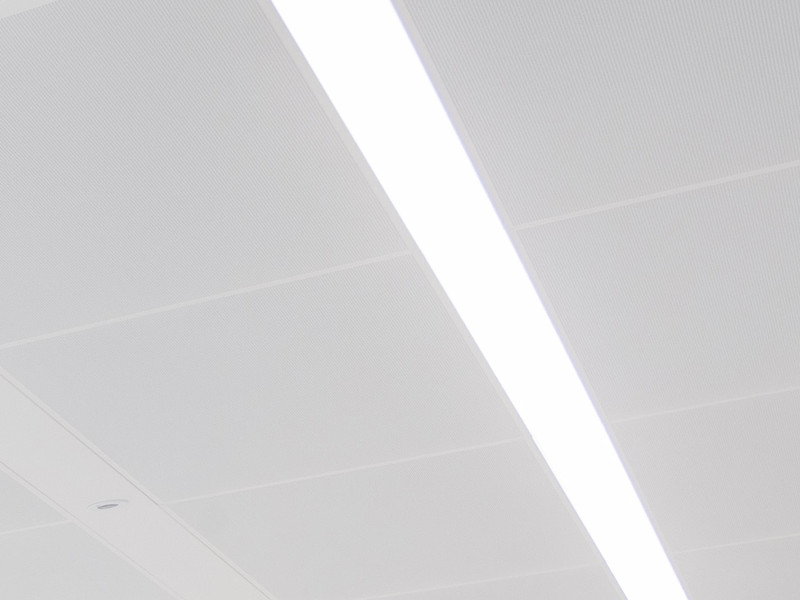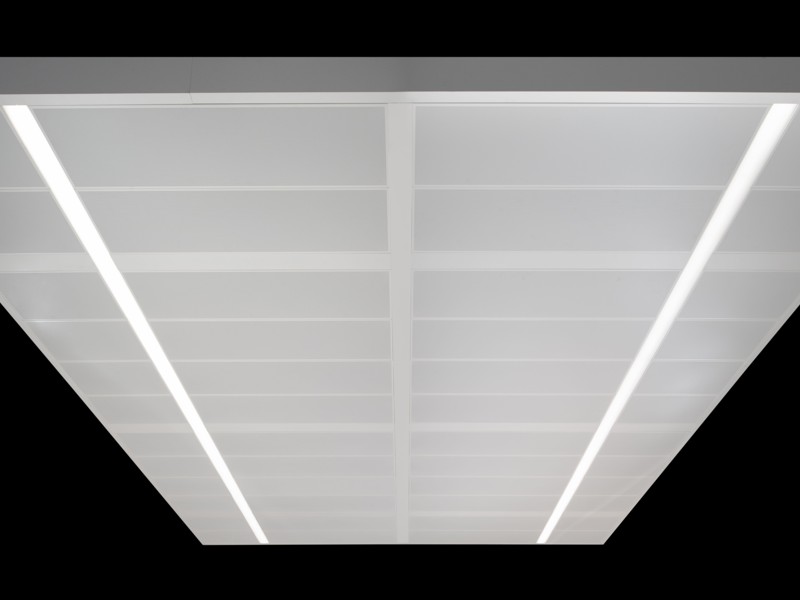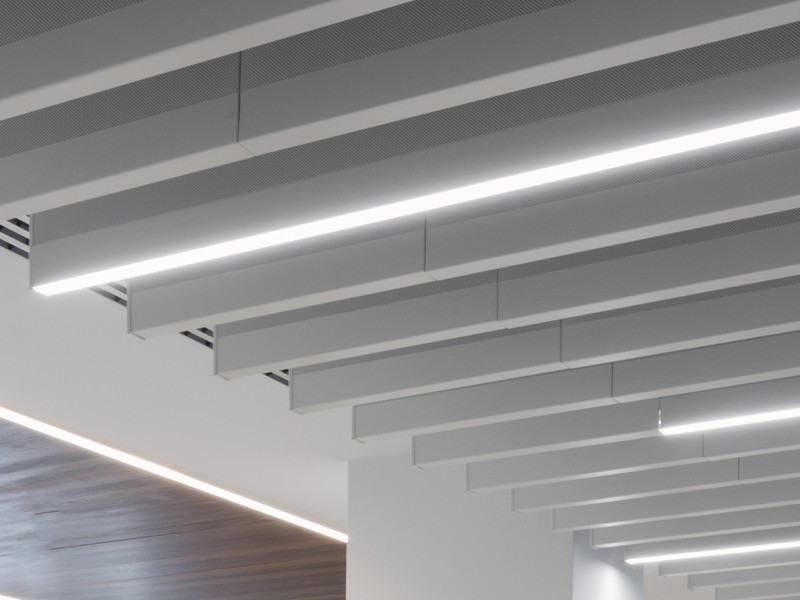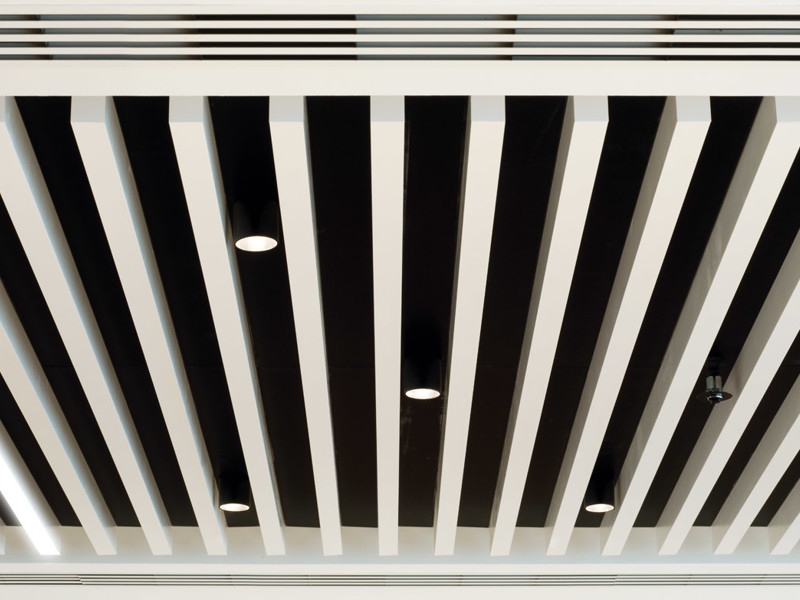Suspended Ceiling Lights
Lighting can make or break a room, and if you’ve got a suspended ceiling, or you’re having one installed, a lighting upgrade makes all the difference. At SAS, we’re proud to offer the suspended ceiling lights you need for your project.
What are suspended ceiling lights?
When a ceiling is suspended, there’s still the small matter of lighting to contend with; that’s where suspended ceiling lights come in. Suspended ceiling lights fit into a suspended, or drop, ceiling, fixing into tiles or linear ceilings with ease to complement the look and function in a situation where standard lighting just won’t work.
These lights are an easily-incorporated addition to the suspended ceiling, creating a bright and open lighting solution to an office or commercial building. The suspended ceiling keeps any cabling hidden too, for a clean, modern look.
What are the different types of suspended ceiling lights?
Suspended ceiling lights come in several varieties, which are as follows:
LED suspended ceiling lights
LED stands for Light Emitting Diode, and they produce light that is up to 90% more efficient than previously popular incandescent light bulbs. As an energy efficient lighting option, LEDs offer brightness, longevity, and a distinct lack of that annoying flickering that you find in office lighting of old.
Suspended ceiling tube lights
Tube suspended ceiling lights provide that spotlight look for a suspended ceiling, carrying the necessary electricity down a ‘tube’ to a bulb that appears at the end, on the surface of the drop ceiling.
Recessed ceiling lights
Recessed ceiling lights do what they say on the tin; they’re recessed, so they stay hidden, even in a suspended ceiling. Recessed ceiling lights look particularly effective when used in conjunction with a linear ceiling.
What are the benefits of suspended ceiling lights?
Versatility
The different kinds of suspended ceiling lights available means there’s an option that suits the kind of suspended ceiling you’re after. So from a conventional tiled suspended ceiling, to a contemporary linear look, there’s a lighting to go with it that will be exactly what you need.
Energy efficiency
When you opt for suspended LED ceiling lights in particular, their efficiency in comparison to their incandescent counterparts can save you money, and reduce your businesses’ carbon footprint.
Easy to install
The lighting in a suspended ceiling is as easy to install as the ceiling itself, and what’s more, all the cabling is hidden.
What are the benefits of LED suspended ceiling lights?
No warm up time
LEDs are instantly bright, without the warm up time that other bulbs may have.
Energy efficient
As we’ve mentioned, LEDs use a significantly low amount of electricity.
Longevity
LEDs can last for years, meaning you won’t have to worry about replacing bulbs for a while yet!
Why choose SAS?
To put it simply, at SAS, your whole ceiling project is catered for, including the lighting. Our lights can be installed to provide a variety of looks and functions in a range of commercial settings, from offices and retail units to universities and school buildings.
The lighting offering from SAS is the result of 50 years of design collaboration with the world’s most discerning clients, and we’re proud to be pioneers in our field, understanding that smallest error in detailing can undermine success.
Our team of experts are on hand to guide you on the best suspended ceiling lights for your project, and help you get the best performance out of them.
Frequently Asked Questions
Do SAS manufacture suspended ceiling lights?
Yes, our lighting is designed in-house and manufactured by SAS International.
Can I still access utilities if lighting is part of my suspended ceiling?
Yes, access to utilities such as electricity cables, air conditioning and fire and smoke detection systems will still be easy, even with lighting integrated into the ceiling.
How do I go about working with you on suspended ceiling lights?
If you’re interested in transforming the look of your commercial space with suspended ceiling lights, drop us a call or an email; we’ll be happy to talk to you about what you need, and explain the next steps.
Can you advise me on recommended light levels for different parts of the building?
Yes, we’re only too happy to help; from the reception area to the main office, we can tell you what ‘lux’ is recommended.
What is the thermal output of your light fittings?
LEDs do not generate light by heating up until they glow, but 50W of electrical load is still dissipating 50W that will eventually end up as heat somewhere. The majority of the heat will be spread evenly across the LED PCBs themselves, whilst 10 or 12% will be lost at the driver. In normal conditions, surface temperatures will not exceed 50° C.
Are your fittings compliant to part L2 of The Building Regulations? Are they eligible for an ECA?
Yes, but the minimum standards for these schemes are regularly reviewed and each planned lighting installation should be assessed individually prior to commitment.



